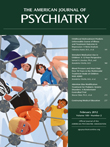Traumatic brain injury (TBI) is a major public health problem with far-reaching effects for both injured individuals and their families, as Bob and Lee Woodruff attest in their moving narrative in the foreword to this textbook. This edition provides comprehensive coverage slanted toward neuropsychiatrists, neuropsychologists, and other mental health professionals. The chapters on neuropathology, genetics, structural and functional imaging, neuropsychiatric and neuropsychological assessment, and electrophysiology are outstanding. The book is not designed as a how-to guide for clinical treatment or prescribing information, reflecting the fact that current standards of TBI treatment, as understood by leading experts in this field, do not lend themselves well to simplified algorithms. Notably, the book does not cover the acute medical management of TBI in emergency settings, nor does it cover the management of persistent postconcussive symptoms in primary care, arguably the setting best suited to address many of these symptoms.
Since mild TBI accounts for the vast majority of all TBI cases and related postconcussion symptom sequelae, I was particularly interested in how this topic was handled. I was quickly heartened by the outstanding opening chapter on epidemiology, in which the case is convincingly made that mild TBI is very different clinically from moderate or severe TBI and that this distinction is critical to understanding (and applying) existing clinical, natural history, and epidemiological evidence. The chapter also recommends use of the term concussion rather than mild TBI, both to help with this distinction and because of findings from numerous studies, including randomized clinical trials, confirming the importance of promoting positive expectations after concussion injury.
Then a curious thing happens. With few exceptions, the word concussion is never used in subsequent chapters, and TBI is presented as one clinical entity (on a continuum from negligible transient symptoms to persistent vegetative state). This creates an interesting quandary for readers trying to understand how to apply the extensive information to individual patients. For example, when I explored the use of cholinergic augmentation medications, I found cautious endorsement related to mild TBI in chapter 15. However, in chapter 17, on cognitive changes, this “somewhat equivocal” evidence is noted to be based largely on studies of moderate and severe TBI. Chapter 37, on cognitive rehabilitation, is another example where distinguishing between mild and moderate/severe TBI might have enhanced my understanding of the clinical trials evidence.
Other chapters most relevant to concussion/mild TBI include chapters 12 and 26 on posttraumatic stress disorder (PTSD) and war-related TBI, both excellently representing prevailing perspectives, and a very useful chapter on sports injuries (chapter 27). The topic of how postconcussion symptoms interact with PTSD is always interesting but does not fit well into Venn diagram conceptualizations (as shown in chapter 12), given evidence that even symptoms such as headaches are often more strongly associated with PTSD than with concussion.
This brings up an interesting point having to do with differences in interpretation of available evidence from the perspective of experts in TBI (which this book represents) and those in primary care and other medical fields. The very existence of intense debate concerning causation of postconcussive symptoms (chapters 12, 15, and 26) reflects the inherent nature of this condition. Studies showing that postconcussion symptoms occur just as commonly following nonhead injuries as they do after mild TBI/concussions, or more commonly in association with depression and PTSD, can be interpreted in only one important way: that the postconcussive symptom construct (however it may be understood currently) is not fully explained. There are many names for multisymptom conditions that are not fully explained, but they all share one thing in common: the most effective treatment approaches, demonstrated in randomized controlled trials, involve collaborative care models with case management based directly in primary care. The current evolution of medical practice toward patient-centered primary care teams has considerable implications for treating chronic postconcussive symptoms.
However, I was encouraged that the concussion/mild TBI clinical field might be similarly evolving after reading chapter 24 on chronic pain management and chapter 31 on the family system. The pain management chapter encompasses nonpharmacological, behavioral, and pharmacological strategies and is equally useful for primary care professionals and specialists. The chapter on the family system includes an example of superb risk communication, with specific recommendations for compassionately addressing expectations. These chapters provide model templates for the modern era of patient-centered treatment of chronic multietiology symptoms, including those following concussion/mild TBI.
The last chapter on complementary and integrative care was most startling. This chapter summarizes dozens of compounds, nutrients, vitamins, herbs, and putative nootropics of which I had never heard. After 38 chapters characterizing the complexity of TBI and general lack of high-quality randomized controlled trials to guide clinical recommendations (especially for mild TBI/postconcussive symptoms), this chapter struck a decidedly different tone, concluding that alternative treatments offer “significant benefits and few side effects for patients with TBI” (p. 616). This is perhaps one of the strongest evidence statements in the entire textbook and left me pondering where the experts will be taking us next.

